
A fire engine is a road vehicle that functions as a firefighting apparatus. The primary purposes of a fire engine include transporting firefighters and water to an incident as well as carrying equipment for firefighting operations. Some fire engines have specialized functions, such as wildfire suppression and aircraft rescue and firefighting, and may also carry equipment for technical rescue.

Scania AB is a major Swedish manufacturer headquartered in Södertälje, focusing on commercial vehicles—specifically heavy lorries, trucks and buses. It also manufactures diesel engines for heavy vehicles as well as marine and general industrial applications.

Mack Trucks, Inc., is an American truck manufacturing company and a former manufacturer of buses and trolley buses. Founded in 1900 as the Mack Brothers Company, it manufactured its first truck in 1907 and adopted its present name in 1922. Mack Trucks is a subsidiary of AB Volvo which purchased Mack along with Renault Trucks in 2000. After being founded in Brooklyn, New York, the company's headquarters were in Allentown, Pennsylvania, from 1905 to 2009 when they moved to Greensboro, North Carolina. The entire line of Mack products is still produced in Lower Macungie, Pennsylvania, and Salem, Virginia, with all powertrain produced in the Hagerstown, Maryland plant. They also have additional assembly plants in Pennsylvania, Australia, and Venezuela. There was also (previously) a Mack plant in Hayward, California, and Oakville, Ontario, Canada.
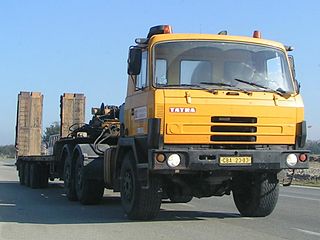
The Tatra 815 is a truck family, produced by Czech company Tatra. It uses the traditional tatra concept of rigid backbone tube and swinging half-axles giving independent suspension. The vehicles are available in 4x4, 6x6, 8x8, 10x8, 10x10, 12x8 and 12x12 variants. There are both air-cooled and liquid-cooled engines available with power ranging from 230–440 kilowatts (310–590 hp). As a successor to Tatra 813 it was originally designed for extreme off-road conditions, while nowadays there are also variants designated for mixed use.

Magirus GmbH is a truck manufacturer based in Ulm, Germany, founded by Conrad Dietrich Magirus (1824–1895). It was formerly known as Klöckner Humboldt Deutz AG, maker of the Deutz engines, so the brand commonly used was Magirus Deutz, and for a short time Klöckner. Most trucks from Magirus were also known as Magirus-Deutz. The logo of Magirus Deutz was a stylised M with a sharp, long centre point to represent the spire of Ulm Minster.

The International Harvester Company was an American manufacturer of agricultural and construction equipment, automobiles, commercial trucks, lawn and garden products, household equipment, and more. It was formed from the 1902 merger of McCormick Harvesting Machine Company and Deering Harvester Company and three smaller manufactures: Milwaukee; Plano; and Warder, Bushnell, and Glessner. In the 1980s all divisions were sold off except for International Trucks, which changed its parent company name to Navistar International. Its brands included McCormick, Deering, and later McCormick-Deering, as well as International. Along with the Farmall and Cub Cadet tractors, International was also known for the Scout and Travelall vehicle nameplates. Given its monumental importance to the building of rural communities the brand continues to have a massive cult following. The International Harvester legacy non-profits host some of the largest agriculture related events in the United States.

Pierce Manufacturing is an American, Appleton, Wisconsin-based manufacturer of custom fire and rescue apparatus and a wholly owned subsidiary of Oshkosh Corporation. Pierce was acquired by Oshkosh in 1996 and is currently the largest fire apparatus company in the world. The company was founded in 1913 by Humphrey Pierce and his son Dudley as the Pierce Auto Body Works Inc., and concentrated on building custom truck bodies for the Ford Model T. The first production facility was designed in 1917 and enlarged in 1918 by architect Wallace W. DeLong. From the 1960s to the early 1980s, Pierce was primarily known for building custom bodies on commercial and other manufacturer's custom chassis, and was considered an original equipment manufacturer (OEM).

The Crown Coach Corporation is a defunct American bus manufacturer. Founded in 1904, the company was best known for its Supercoach range of yellow school buses and motorcoaches; the former vehicles were marketed throughout the West Coast of the United States. Competing alongside Gillig Corporation and similar its Gillig Transit Coach, the two companies supplied California with school buses nearly exclusively into the 1980s.
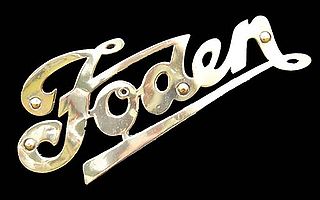
Foden Trucks was a British truck and bus manufacturing company, which had its origins in Elworth near Sandbach in 1856. Paccar acquired the company in 1980, and ceased to use the marque name in 2006.

ERF was a British truck manufacturer established in 1933 by Edwin Richard Foden, from whose initials the company was named. Its factory in Middlewich closed in March 2002, and it was discontinued as a marque by owner MAN in July 2007.

American LaFrance (ALF) was an American vehicle manufacturer which focused primarily on the production of fire engines, fire aerials, and emergency apparatus such as ambulance and rescue vehicles. Originally located in Elmira New York, the final iteration of the company was located in Summerville, South Carolina. It also operated a Canadian plant in Toronto, Ontario, where it sold apparatus under the name LaFrance-Foamite, until 1971.
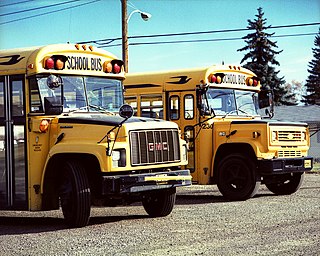
The Chevrolet and GMC B series was a series of cowled chassis that were produced by General Motors. Produced across three generations from 1966 to 2003, the model line was a variant of medium-duty trucks marketed under the Chevrolet and GMC nameplates. Initially derived from the medium-duty C/K series, later examples were derived from the GMT530 architecture.

The Shyft Group, formerly known as Spartan Motors, is an American automobile design company that designs, engineers and manufactures specialty chassis, specialty vehicles, truck bodies and aftermarket parts for the recreational vehicle (RV), government services, and delivery and service markets. The company started in 1975 as a direct result of the bankruptcy of Diamond Reo. It is currently headquartered in Novi, Michigan and has 3,000 employees.
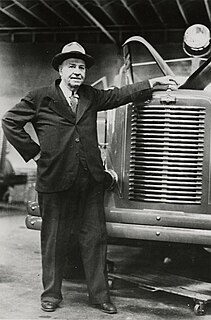
Peter T. Pirsch was a manufacturer who founded Peter Pirsch and Sons, a Kenosha, Wisconsin–based manufacturer of fire apparatus. He is claimed to be the inventor of the first motorized fire engine.

Seagrave Fire Apparatus LLC is an American fire apparatus manufacturer that specializes in pumper and rescue units, as well as aerial towers. In addition to manufacturing new equipment, they refurbish, repair and upgrade older Seagrave apparatus, including National Fire Protection Association updates to equipment. Seagrave operates manufacturing facilities in Clintonville, Wisconsin, and Rock Hill, South Carolina, and is an authorized General Services Administration vendor and supplies the federal government of the United States with firefighting equipment.
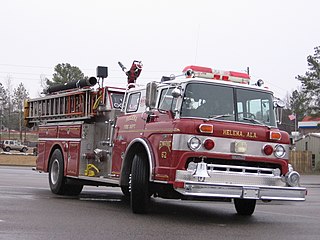
The Ford C series is a range of trucks that was assembled by Ford between 1957 and 1990. The first cab-over engine (COE) truck produced with a tilting cab by Ford, the C-series replaced the C-series COE variant of the F-series, produced since 1948. Produced as both a straight/rigid truck and a tractor, a wide range of versions of C-series was produced, ranging from Class 5 to Class 8 GVWR ratings. The C-series was also used as a basis for fire apparatus production.

Sutphen is an emergency services vehicle manufacturer and marketer based in Amlin, Ohio. Sutphen was founded in 1890 by C.H. Sutphen. The company has four manufacturing plants in Dublin, Amlin, Hilliard, Springfield Ohio and Lake Ariel, PA.

Crane Carrier Company is a manufacturer that specializes in construction truck and garbage truck chassis. Located in New Philadelphia, Ohio, it was established by Robert Zeligson in 1946, along with the affiliated Zeligson Trucks. The primary design of CCC's trucks are Cab-Beside-Engine (CBE) or half-cabs, most notably the Century II Unimixer. Half-cabs have the advantage of being able to carry the booms of cranes, hence the name of the company.
The bus chassis variant of the International S series is a cowled bus chassis that was produced by International Harvester from 1979 to 2004. Produced primarily for school bus applications, the chassis was also produced for other applications, including commercial-use buses and cutaway-cab buses. In addition, the cowled chassis formed the basis for front-engine and rear-engine stripped chassis produced for bus applications.

Crown Firecoach is a nameplate used for various types of firefighting apparatus manufactured and marketed by Crown Coach Corporation in Los Angeles, California from 1951 to 1985. Although sold primarily in the West Coast region of the United States, other examples of the Firecoach were sold to fire departments in Hawaii, Illinois, and New Jersey, as well as in Mexico and Kuwait.



















